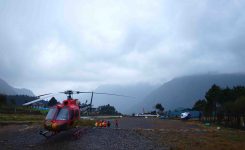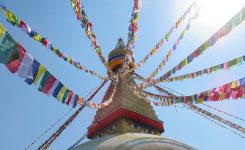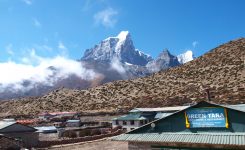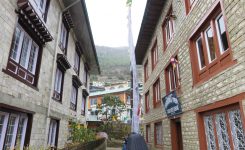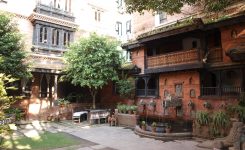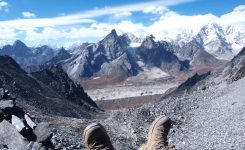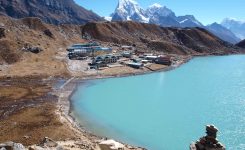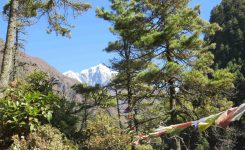Everest Base Camp, Three Passes Trek, Travel
Kala Patthar to Dzongla, Everest Base Camp Honeymoon (Day Thirteen)
DESTINATION: Dzongla
ELEVATION: 4,830 meters
ELEVATION GAIN: -334 meters
DISTANCE: about 8 km (and about 3- 4 hours*)
OXYGEN: 54% of sea level (previous 56%)
DESTINATION: Kala Patthar (from Gorakshep)
ELEVATION: 5,643 meters (51% of oxygen sea level)
On our day 13 of trekking in the Khumbu region, we headed up Kala Patthar (5,643 m) to soak up Mount Everest’s views perfectly framed by the Himalayan mountain range and then head down to Dzongla.
If you’re travelling with a group, you’ll most likely wake up at 4:00 am to hike to the top of Kala Patthar for the sunrise, unforgettable experience from what I’ve heard. However, we decided to head out as soon as there was sunlight as it gets super cold in the dark, and we didn’t want to wake up that early.
Travel Tip: The walls in teahouses are paper-thin, so if you’re a light sleeper, I’d recommend packing some earplugs to sleep through the noise (especially if you’re planning to conquer Kala Patthar after sunrise as we did). You can check out other items we found useful on our Everest Base Camp Packing List.
So we got up around 6:00 am to make sure the sun warmed up the cold Himalayan air before heading out to Kala Patthar.
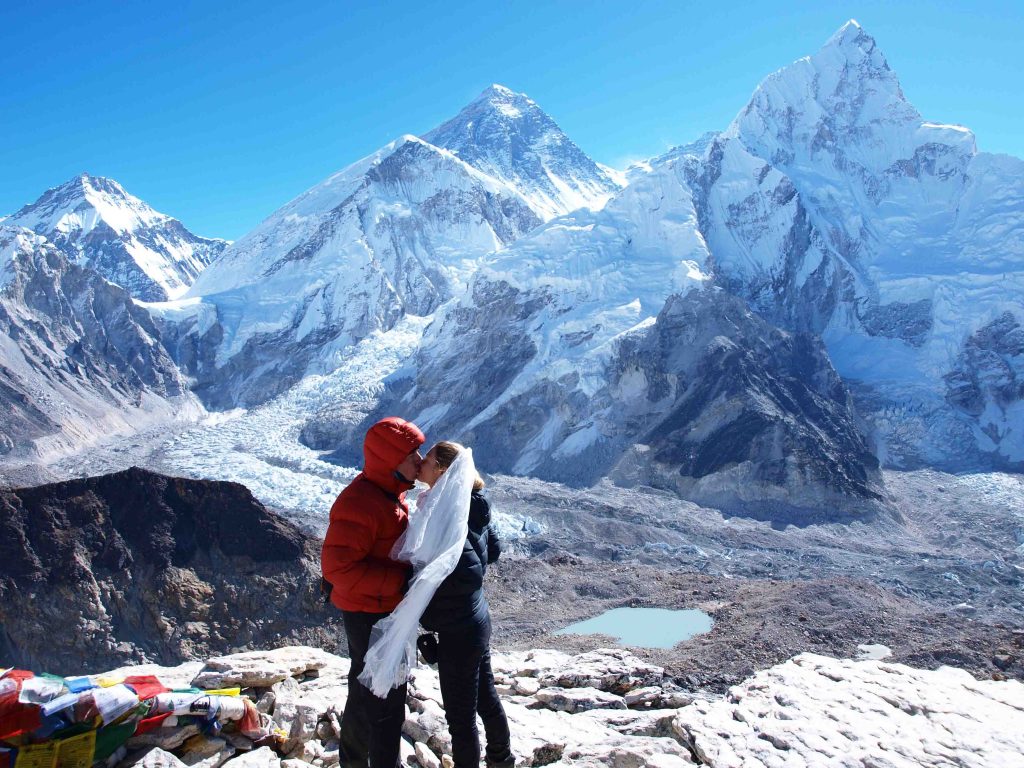
As this was our honeymoon, I carried my veil with us to take this photo. It was so cold all I could take off was my hat (as you can see my hubby didn’t even do that).
Walking up to Kala Patthar
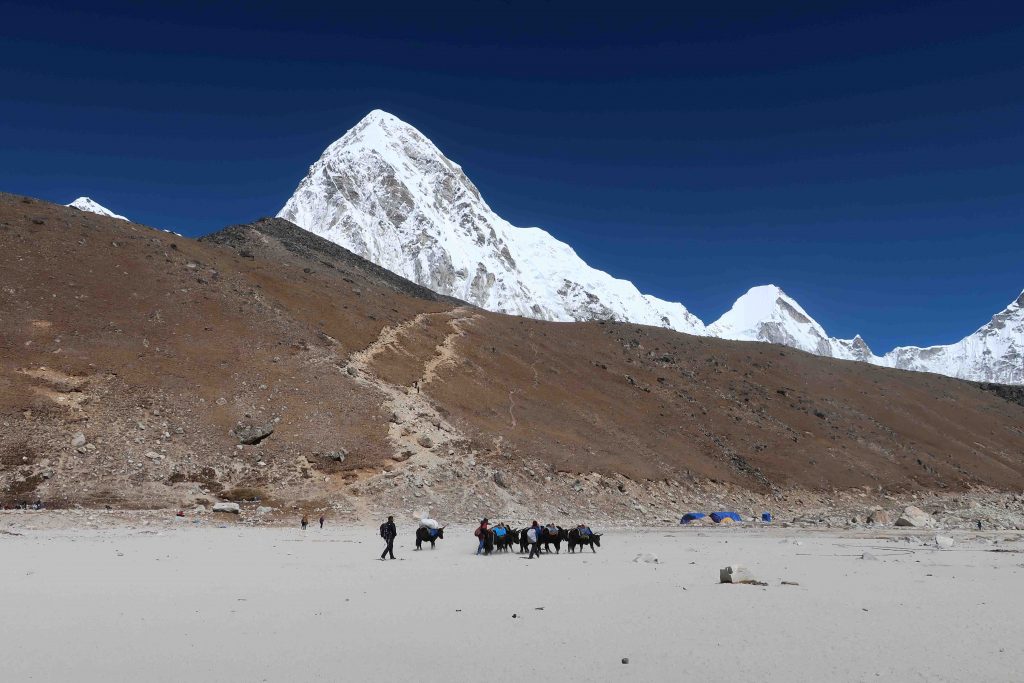
Check-out time at teahouses in the Everest Region is usually before nine unless you want to pay an extra night to stay. However, many trekkers go to Kala Patthar in the morning before heading out, so teahouses (at least in Gorak Shep) offer to store your backpack until your return. If you don’t want to leave your bags, then you’d have to make sure you make it down from Kala Patthar before nine. If we had more time, I’d stay in Gorak Shep an extra night and walk up to Kala Patthar to watch the sunset over Mount Everest. We met someone who did that, and they said they teared up a little because of how beautiful it was.
The walk to Kala Patthar is not too bad, but you’ll feel the thin air taking its toll. The higher we got, the harder it was to catch our breath, but because we have already been exposed to these heights (when we crossed Kongma La) it wasn’t as tough on our bodies.
As I mentioned, most groups will leave at 4:00 am to head up there to catch the sunrise, which means you get unforgettable views, but that also means waking up super early, hiking in the face-numbing cold sharing the path with a lot of other trekkers. That didn’t sound appealing to us, so we hiked up at 7:00 am or something like that.
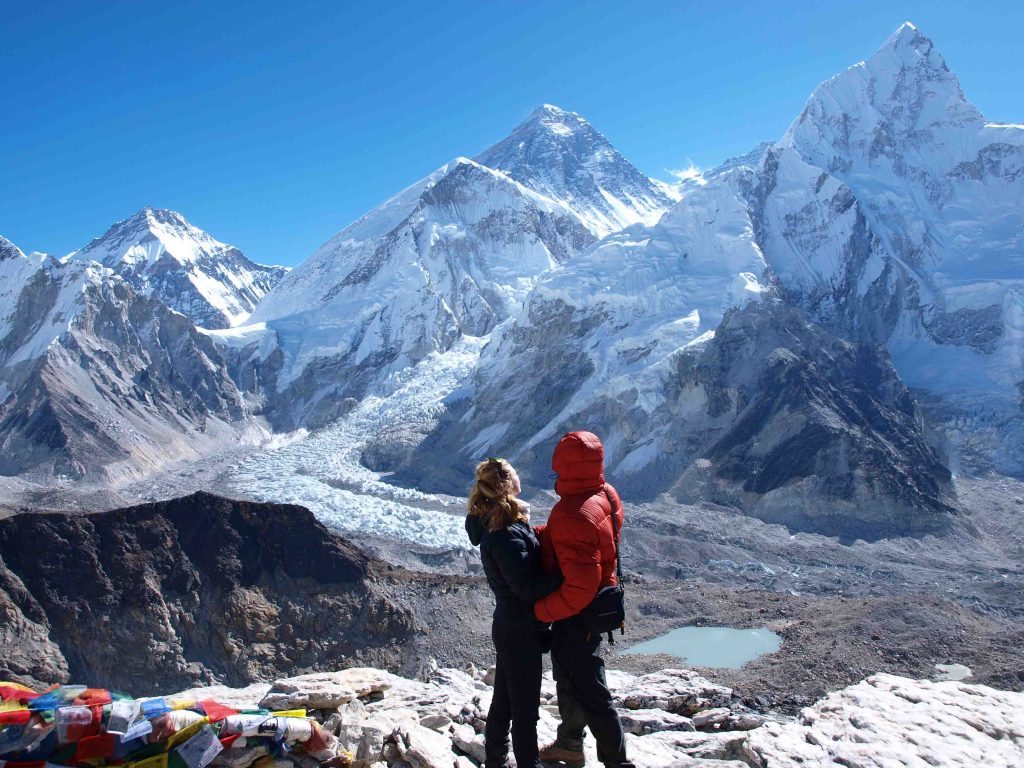
It was the perfect timing because it wasn’t too cold, the path was well lit by the morning sun, and there wasn’t a single soul but us walking up to the top of Kala Patthar. One other solo trekker caught up with us later, so it was just the three of us, and we could take the most beautiful photo commemorating our adventurous honeymoon to the Everest Base Camp.
Goodbye Mt. Everest, hello Dzongla
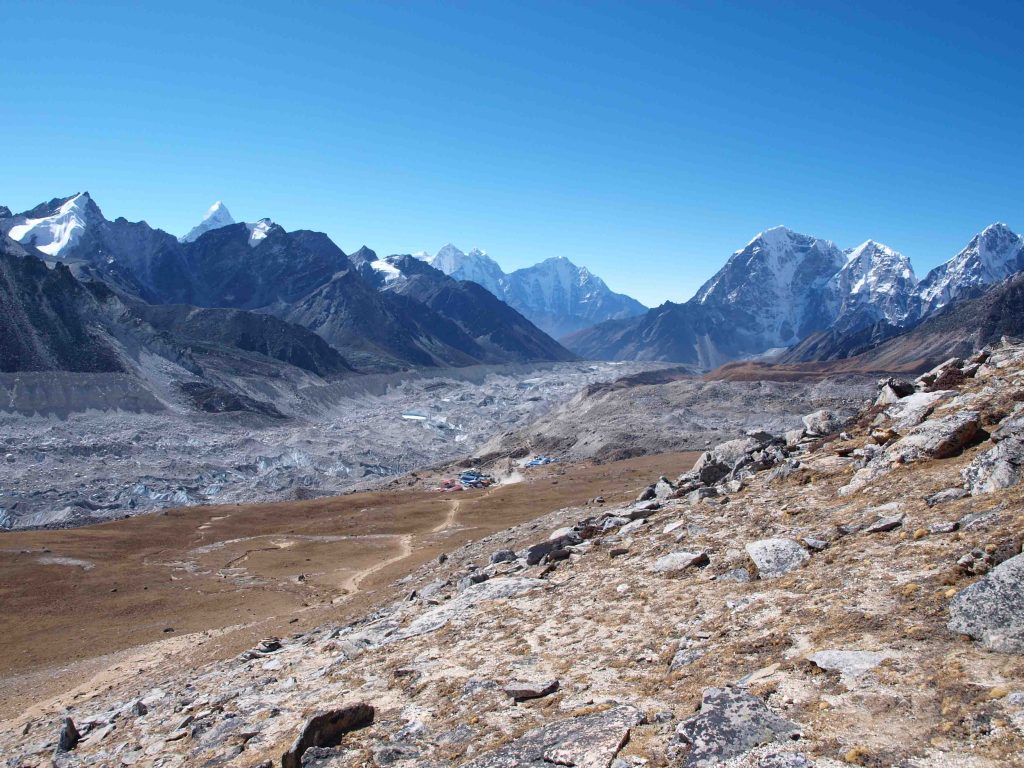
After about an hour of chilling at the top of Kala Patthar and a thousand more photos, we decided it was time to head down and then make it to Dzongla in time before sunset. The following day was reserved for our second pass crossing – the Cho La Pass over a glacier – exciting and terrifying at the same time.
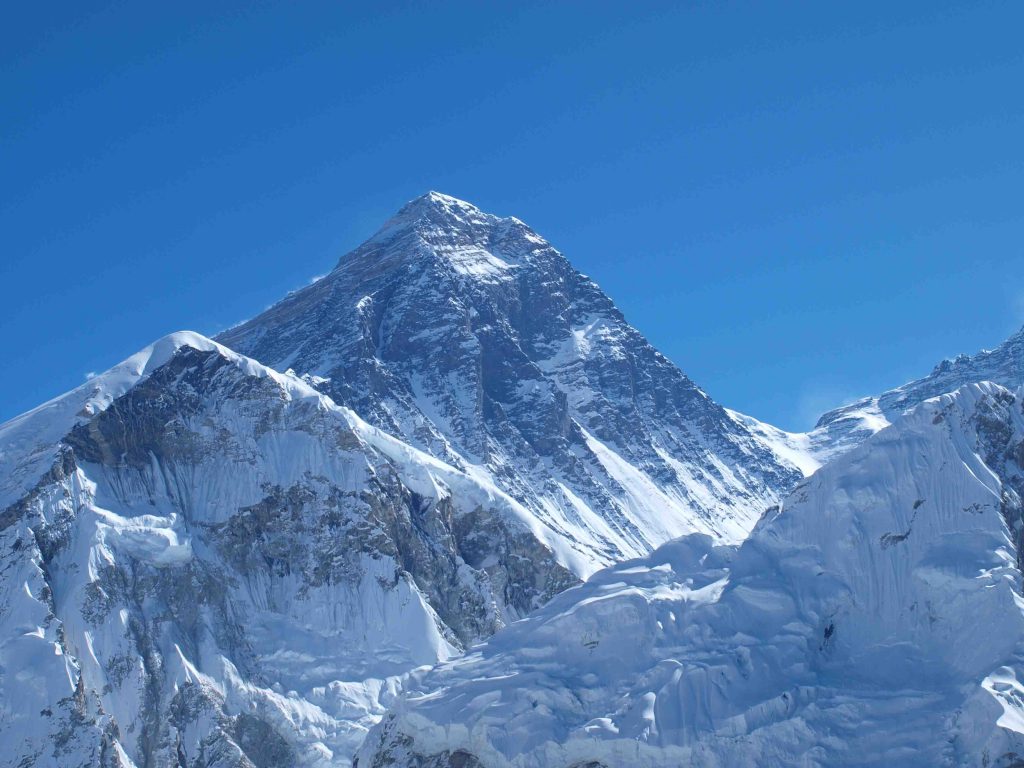
Roughly it took us an hour and a half to get to the top of Kala Patthar and about an hour to get down, so when we got back to Gorak Shep, it was time to quickly eat something and head to Dzongla before it’s too dark (the sun sets soon after 5:45 pm in the Himalayas in October).
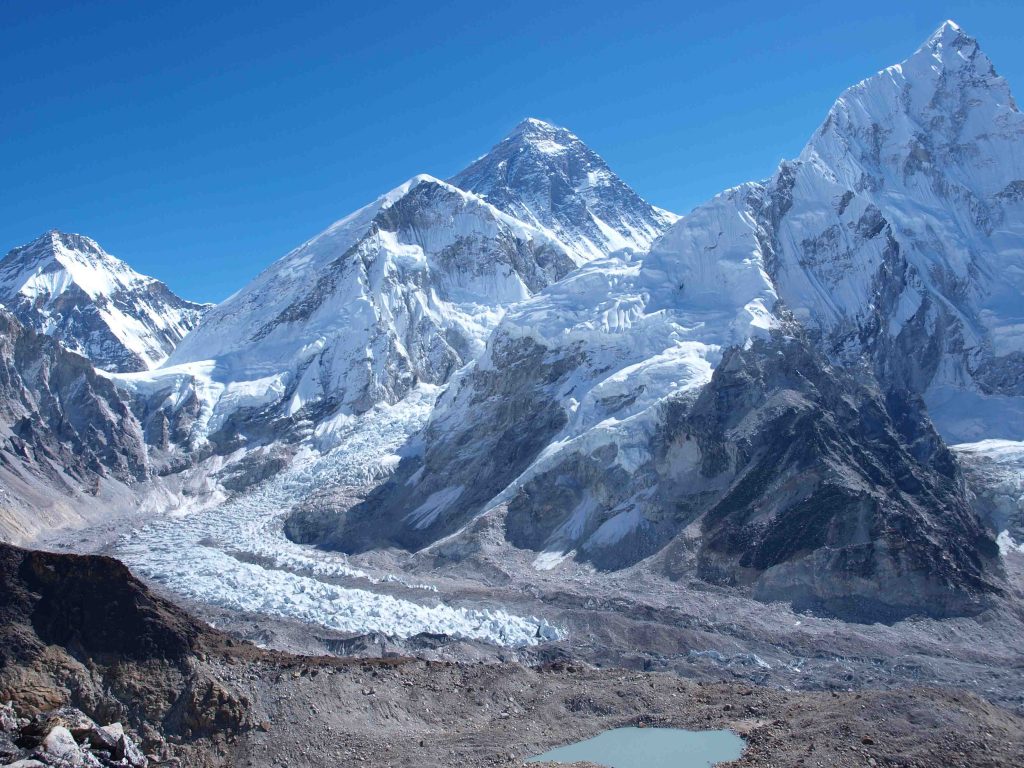
The walk from Gorak Shep to Dzongla was pretty strenuous, especially with our backpacks. We left shortly after 11:00 am and got to Dzongla a little before sunset, tired and hungry. Although we were not the last ones, we were also not the first to arrive at Dzongla, so most teahouses were all booked up.
Travel Tip: If travelling with other people, when you get to a village and need to find a room to stay, leave one person with the bags and let the other find a teahouse room. You’ll want to ask if they have a shower, see the room and the toilets before booking, so some running around may happen, and it’s more comfortable without a heavy backpack.
After a little running around, we found a teahouse called Maison Sherpa, a very nice cozy place, and settled into our room. I struggled a lot with altitude sickness symptoms from mild to more moderate at times, but as we were getting closer to the final part of our trek, the more acclimatized I was getting. After some fried veggie rice at the resto and a few hot mint teas, we played a round of cards and called it a night so that we rest for a challenging trek ahead – the Chola Pass.
*This is the only part of the trek I can’t recall, but I do know that it’s 4 km from Lobuche to Gorak Shep, and it’s about the same distance to walk from Lobuche to Dzongla, which is why I am assuming it’s about 7.5 km or so. It will probably take you four or so hours to walk that distance in the high altitudes.
Read next:
Everest Base Camp Trek Series:
View All Posts
- Day 1 – Toronto to Kathmandu
- Day 2 – Exploring Kathmandu
- Day 3 – Kathmandu to Lukla
- Day 4 – Namche Bazaar
- Day 5 – Namche Bazaar to Tengboche
- Day 6 – Tengboche to Pangboche
- Day 7 – Pangboche to Dingboche
- Day 8 & 9 – Dingboche to Chuchung
- Day 10 – Chuchung to Lobuche (over the Kongma La Pass)
- Day 11 – Lobuche (and the Italian Pyramid)
- Day 12 – Gorakshep to Everest Base Camp
- Day 13 – To Kala Patthar and Dzongla
- Day 14 – To Dragnak (over Chola Pass)
- Day 15 – Gokyo (with Gokyo Ri ascent)
- Day 16 – Back to Namche Bazaar
- Day 17 – Namche Bazaar to Lukla
- Day 18 – Lukla to Kathmandu
- Day 19 – Kathmandu to Toronto


